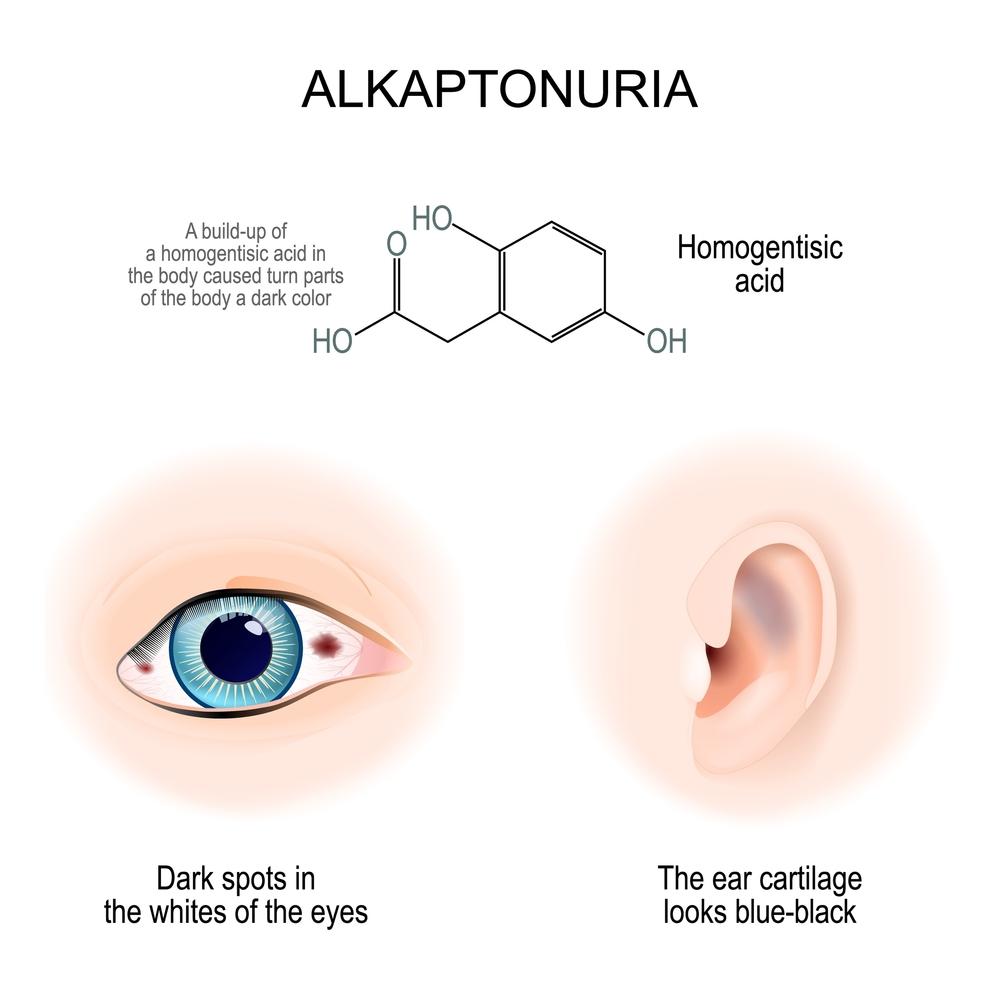The rare disease, Alkaptonuria, is a hereditary metabolic disease with an autosomal recessive inheritance pattern. The cause of this rare disease is a defect in the enzyme homogentisic acid oxidase, which involves the metabolism of homogentisic acid (HGA), an intermediate compound in the metabolism of tyrosine and phenylalanine.
Epidemiological
As per the publication of the National Library of Medicine, this is a rare disease, and less epidemiological data is available. The worldwide prevalence of AKU is 1 per 100,000 to 250,000. Alkaptonuria Severity Score Index (AKUSSI) is a scoring system based on clinical features that can objectively measure the degree of severity of the disease. Furthermore, between 2014 and 2019, the Biochemical Genetics Laboratory (BGL) at Aga Khan University Hospital reported 21 cases with a mean age of 19.4 ± 24.5 years and a male-to-female ratio of 2:1, of which eight were adults and twelve were below 2.5 years of age.
Nitisinone: A promising treatment for Alkaptonuria
AKU is being managed by supportive treatment of medically pain killers, anti-inflammatory drugs, antioxidants, i.e., ascorbic acid, and low tyrosine and phenylalanine diet, as well as surgical arthroplasty. Investigation trials are going on to determine the adequacy of Nitisinone. And many studies showed that Nitisinone is efficacious for treating AKU in adulthood. When Nitisinone is used in childhood, it can appear as an effective preventive cure for complications related to AKU. A study by AKU Society, Cambridge, UK, is in the process of finding the age at which ochronosis most likely starts. This will clarify the best possible early age to start treatment with Nitisinone and stop the disease before it appears.
Side-effects of Nitisinone
Tyrosine-induced keratopathy may be asymptomatic, i.e., painless eye, or symptomatic, i.e., redness, pain, and photophobia, and sometimes hypertyrosinemia does not cause keratopathy at all. Diet restricted in tyrosine and phenylalanine in the form of reduced protein intake and plasma tyrosine level measurements are recommended to prevent hypertyrosinemia.
Conclusion
In several investigations, Nitisinone has proven to be beneficial in preventing the development of ochronosis in childhood and treating the complications of AKU if started in early adulthood. Adverse effects related to the said drug can be managed with regular follow-up and appropriate laboratory investigations. A proper treatment strategy can be devised for patients through further research. Low-dose Nitisinone with combination therapy may be effective in treating AKU.
Reference:


